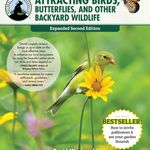
If you’ve run into a garden rut, we’ve got you covered. It’s time to start planning for your first trip to the local nursery or garden center. What plants will you need for a new garden area? Are you noticing a lack of excitement or color outside (we call this the mid-spring slump)? Just itching for an exciting new addition to a well-established bed? Now is the time to make a list of the perennials, shrubs, and/or trees that will fill those needs.
To help you make the best choices, we’ve asked regional garden experts to tell us what plants are on their spring shopping lists. These plants serve a range of purposes in the garden, but all are region-specific stars. From out-of-this-world flowers to show-stopping foliage and everything in between, discover fantastic plants that would be a welcome addition to any garden in the region.
Find great shopping-list plants for the Southeast below, and check out this comprehensive collection of articles to discover more springtime planting and planning inspiration.
1. Fireside® ninebark

Name: Physocarpus opulifolius ‘UMNHarpell’
Zones: 3–8
Size: 5 to 7 feet tall and 4 to 6 feet wide
Conditions: Full sun to partial shade; moist, well-drained soil
Native range: North America
In my opinion, ninebarks are vastly underused. Their dramatically colored foliage, exfoliating bark, and manageable size should earn them a place in any zone-appropriate garden. Fireside® is a compact new cultivar that has proven to be mildew resistant, an upgrade that gives it an edge over older selections such as ‘Diabolo’. New growth emerges a beautiful coppery red, then matures to a deep reddish purple; the foliage color is best in full sun. Small clusters of white flower buds open to light pink and attract pollinators. For instant garden drama, pair Fireside® with blue-tinged ornamental grasses and pink or golden coneflowers (Echinacea spp. and cvs. and Rudbeckia spp. and cvs., Zones 3–9).
2. ‘Ikandi’ Japanese maple

Name: Acer palmatum ‘Ikandi’
Zones: 5–9
Size: 10 feet tall and 5 feet wide in 10 years
Conditions: Partial shade; moist, well-drained soil
Native range: Japan
This cultivar was discovered by renowned nurseryman Talon Buchholz as a chance seedling of ‘Alpenweiss’ Japanese maple (A. palmatum ‘Alpenweiss’, Zones 5–9), and it is truly an improvement upon that beautiful tree. I buy ‘Ikandi’ for clients whenever I can find it because it is indeed “eye candy.” The smallish leaves emerge bright pink before quickly developing variegation of pink, white, and green that holds throughout most of the summer. Fall color is a brilliant orange-red. The foliage will burn in afternoon sun in all but the coolest, northernmost parts of its range, so site it in a place that receives either morning sun with afternoon shade, or dappled sun throughout the day. Be sure to plant it near a path where it can wow visitors.
3. ‘Royal Raspberry’ agastache

Name: Agastache ‘Royal Raspberry’
Zones: 5–9
Size: 28 to 32 inches tall and wide
Conditions: Full sun; dry soil
Native range: North America
When I first saw this plant for sale at a conference earlier this year, it stopped me in my tracks. Shortly thereafter it earned a place along a sunny path in my garden. ‘Royal Raspberry’ is part of a collection of Agastache cultivars selected for their robust growth habits and overall hardiness. The foliage and bloom colors are striking: The flowers are a rosy purple with burgundy calyxes, and the minty-scented foliage sports a darker burgundy cast with dark green undertones. Site this plant in full sun and well-drained soil and it will quickly become one of your favorite perennials. During its long midsummer through early-fall blooming period, ‘Royal Raspberry’ is a magnet for bees, butterflies, and even hummingbirds.
4. ‘Totem Pole’ switchgrass

Name: Panicum virgatum ‘Totem Pole’
Zones: 4–9
Size: 72 inches tall and 30 inches wide
Conditions: Full sun; moist to dry soil
Native range: North America
I’m quite excited about this new switchgrass, as it is an improvement on ‘Northwind’. It is extremely vertical and never floppy unless it is grown in too much shade or overly rich soil; this is a plant that thrives on tough love. Its upright growth habit makes it perfect for creating rhythm throughout a larger garden, and with its small footprint it is also an excellent textural focal point for smaller spaces. The steel blue foliage and coppery seed heads make it a great companion plant for ninebarks and conifers. Surprisingly, it is useful in rain gardens as well as dry prairie plantings. As with most ornamental grasses, ‘Totem Pole’ is deer and rabbit resistant.
Jay Sifford is an award-winning garden designer, writer, and speaker based in Charlotte, North Carolina.
Fine Gardening Recommended Products

National Wildlife Federation®: Attracting Birds, Butterflies, and Other Backyard Wildlife, Expanded Second Edition (Creative Homeowner) 17 Projects & Step-by-Step Instructions to Give Back to Nature
Fine Gardening receives a commission for items purchased through links on this site, including Amazon Associates and other affiliate advertising programs.

Planting in a Post-Wild World: Designing Plant Communities for Resilient Landscapes
Fine Gardening receives a commission for items purchased through links on this site, including Amazon Associates and other affiliate advertising programs.

Spear & Jackson 4930FZ Razorsharp Telescopic Tree Pruner
Fine Gardening receives a commission for items purchased through links on this site, including Amazon Associates and other affiliate advertising programs.



















Comments
Log in or create an account to post a comment.
Sign up Log in